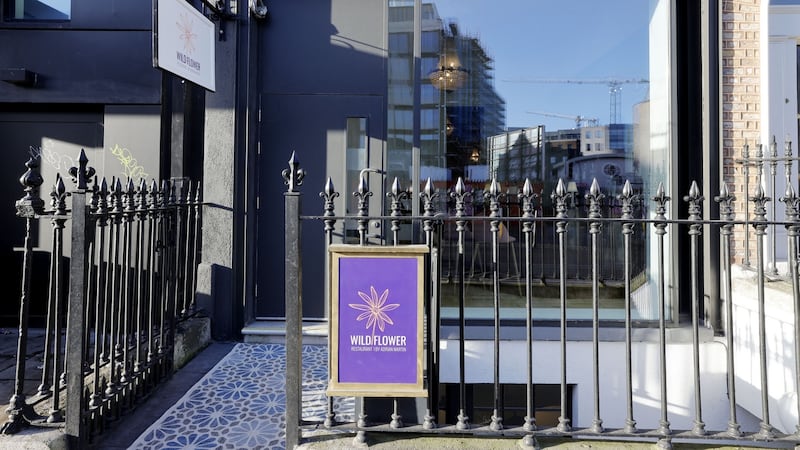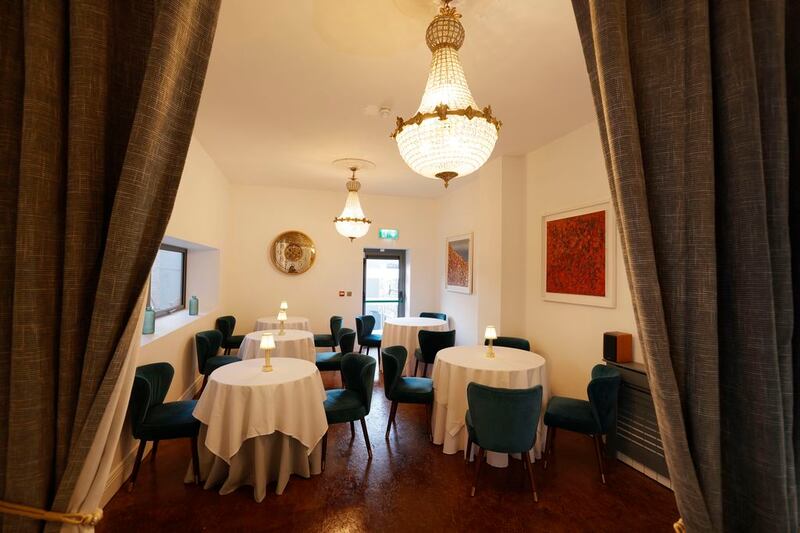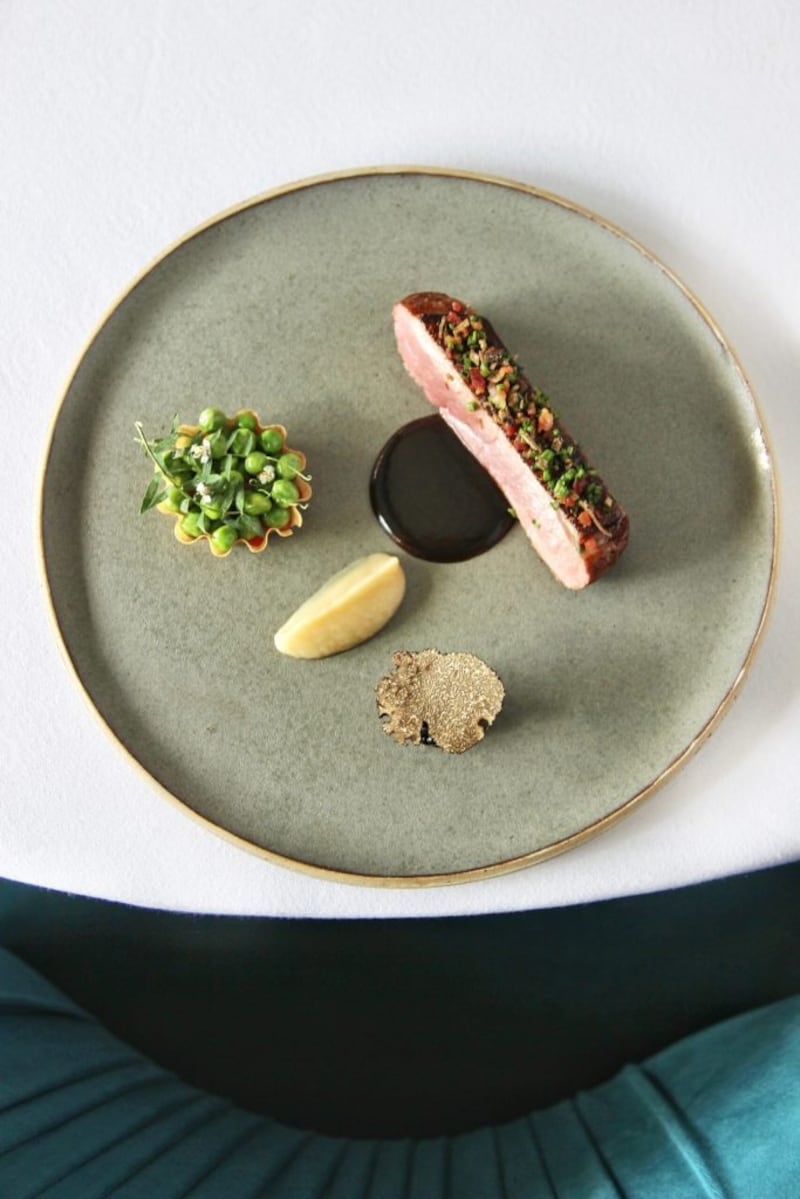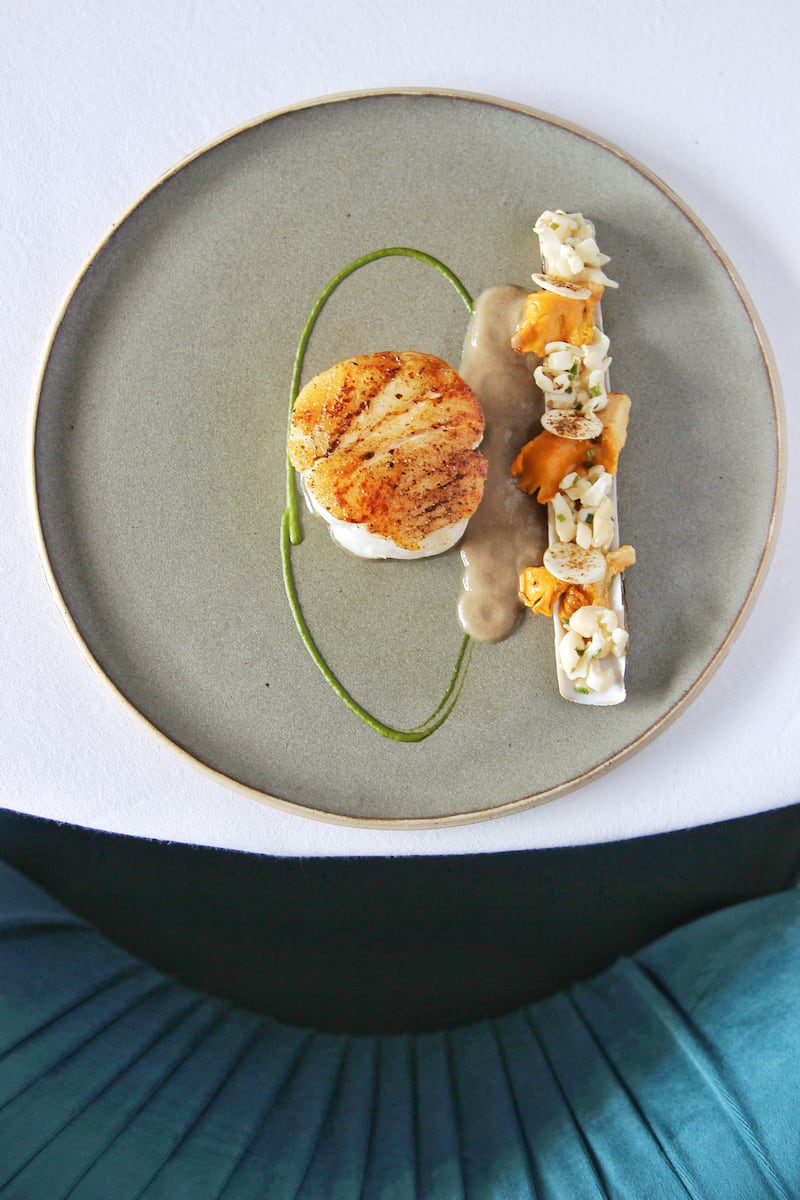Adrian Martin’s Wildflower restaurant on Dublin’s Richmond Street has been open four days when I visit. Enough time to iron out any wrinkles, if you’re paying full price. The word is out, the place is full, and the main room with its gilded Versailles-style chairs is buzzing. My table is in the narrower back room, which is a modern extension to the listed Georgian building.
Martin describes his concept as “a journey of discovery”, with foraged, fermented and seasonal food that is rooted in his home county of Cavan. There are just two options at dinner. A €70 three-course menu, with three choices per course, and a €100 nine-course tasting menu served downstairs, with “available” wine pairings for €55, or €120 for “prestige” wines. Spring for the latter and you’re looking at spending €440 for two, pretty rarefied territory.

Bread is included in the three-course menu, looking suitably rustic on a handmade plate with bits of straw sticking out from under it. Less rustic is a swirl of chicken liver parfait which is so aerated, I struggle to get any flavour, but the sorrel butter is nice and snappy. In another dish are the amuse bouche, a quail’s egg and a filigree of deep fried potato given the salt and vinegar treatment.
For starters, the hand-dived scallop ceviche is served on a shell. There are four small scallops which have had a brush with a blow torch and not enough time with lime juice to bring that customary zing and cure. They taste a little bit tired, and a few foraged leaves, beads of caviar and a meadowsweet dressing do little to lift the dish.

The Jerusalem artichoke is even more restrained when it comes to flavours; the artichoke is in a soup poured around a quenelle of potato at the table. Again, there are decorative foraged leaves and green oil adding a good splash of colour, but it is tame beyond words.
The wine list, from one premium importer, is focused, but most bottles are over €50, and there are no natural wines. There is, however, plenty by the glass, and the cheapest white and red are good options. We go with the Azevedo Vinho Verde at €35, which our waiter pours with much enthusiasm, practically filling our large, serviceable glasses.
It is quite a wait for our main course. The sauce grand veneur which accompanies the tranche of duck breast has the tell-tale skin of something that has been sitting around too long. It appears to be thickened Claude Bosi-style, with chocolate rather than the traditional hare’s blood. A circle of tasteless black truffle sits on top of a blackberry, and there is mention of foie gras, which seems to be more of a soft puree accompanying the tepid duck.

The line-caught salt cod seems to have been finished under a salamander, so it is golden on top, but the texture is sticky, as if it was first cooked in a waterbath. It, too, is cold, as are the bits of razor clam and mushrooms dotted in the razor clam shell. Discs of button mushrooms taste like cardboard.
A side dish, a quenelle of potatoes, much like the one with the artichoke dish, is also cold.

Things pick up a bit for the desserts. A wild blackberry vacherin with a base of very solid meringue is filled with fruit puree and cream, and is studded with discs of meringue, slices of blackberry and micro leaves, ready for its close up. A cremeaux, piped into a thick chocolate pastry shell, is similarly photogenic. They are more remarkable for their appearance than their taste.
It gives me no joy to be so critical of the work of an enthusiastic young chef who has sunk his hard earned money into opening his dream restaurant. It may be that it is an off-night. But even allowing for this, comparisons will be drawn between it and the €75 six-course menu in Michelin-starred Variety Jones, for example. The wild element feels more marketing concept than innate, with a bolt-on of unseasonal blackberries and foraged leaves. The prices are high, the choices are limited and the cooking lacks precision.
When scoring a restaurant, an important consideration is whether the restaurant achieves what it sets out to be. At Wildflower, the intentions are good. Perhaps even fine. But for now, the dining is not. And the only thing that is memorably wild about this newcomer is the price.
Dinner for two with a bottle of wine was €175.









